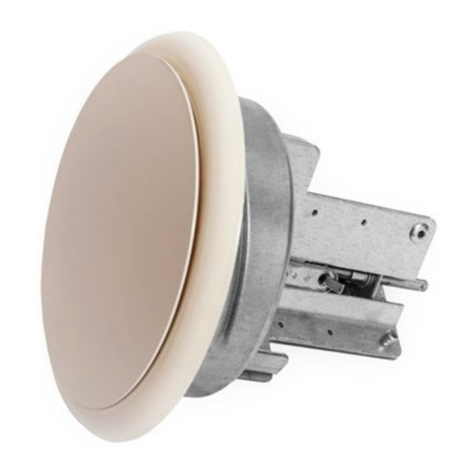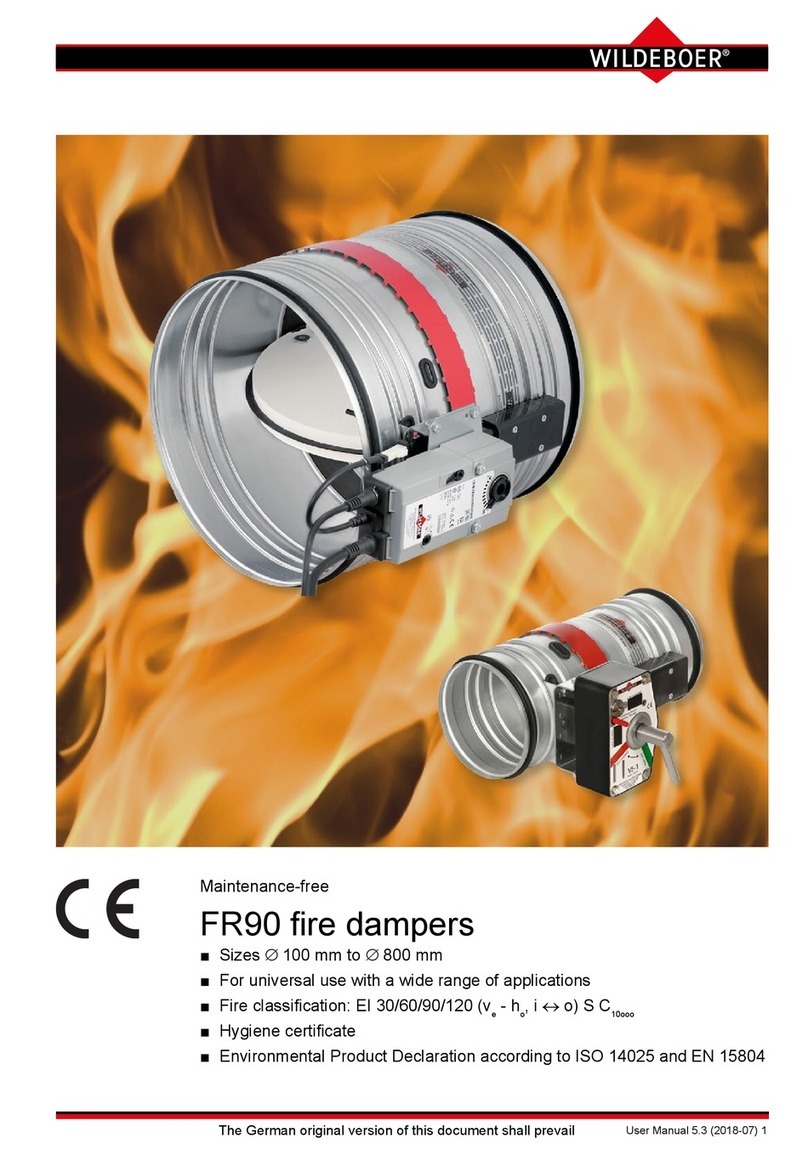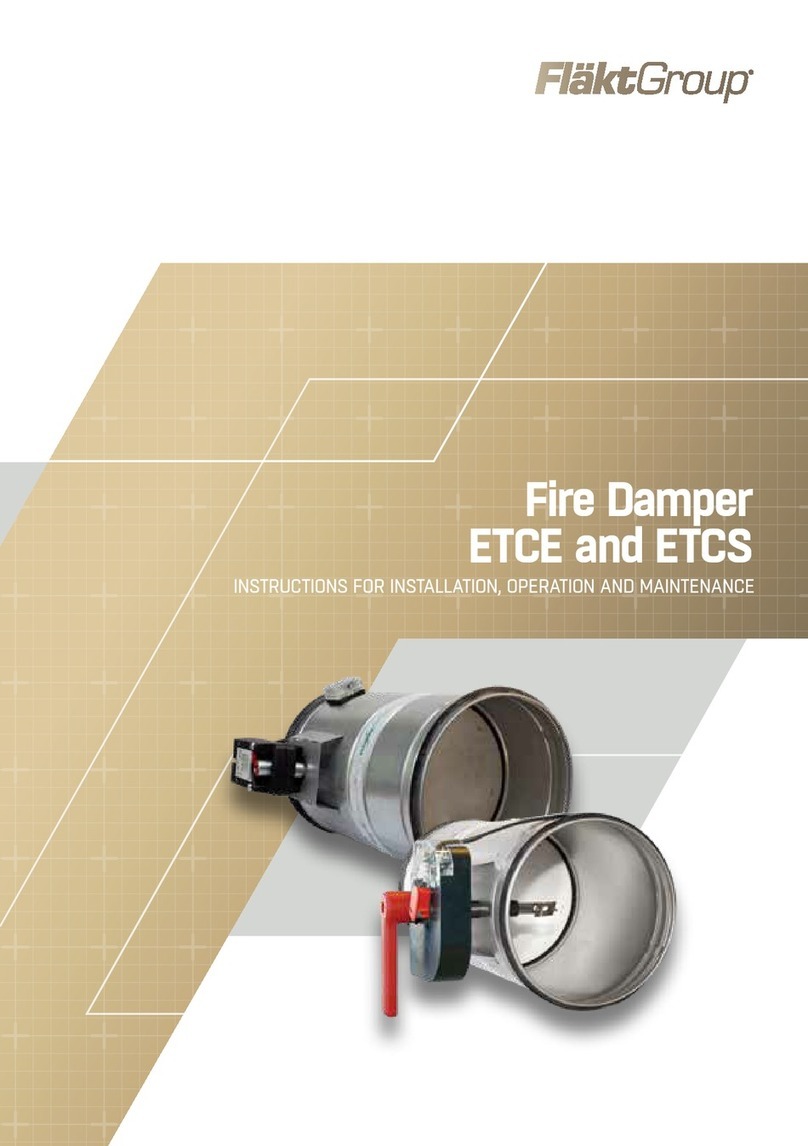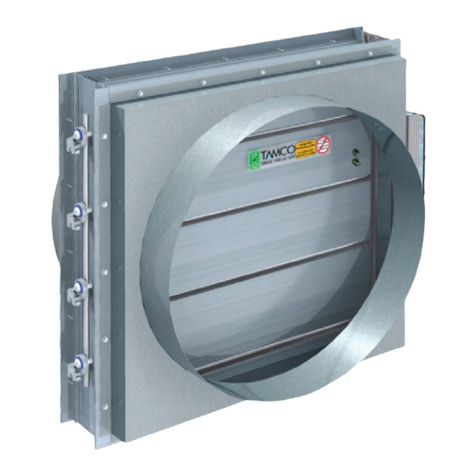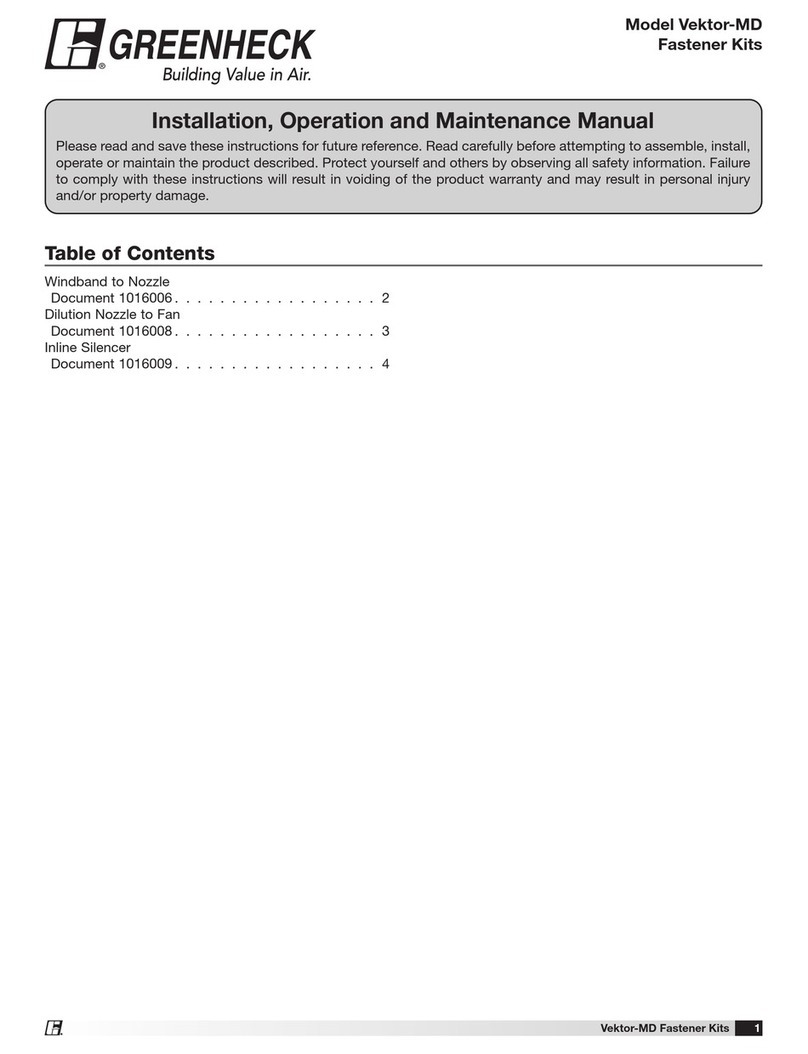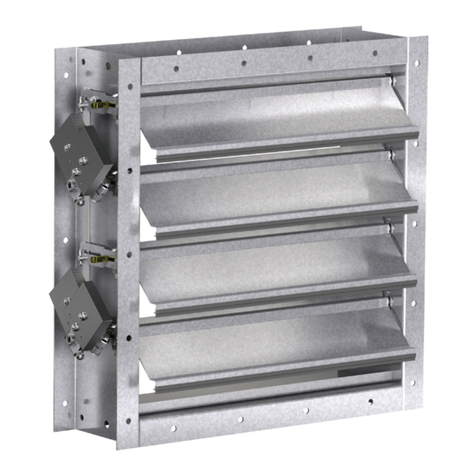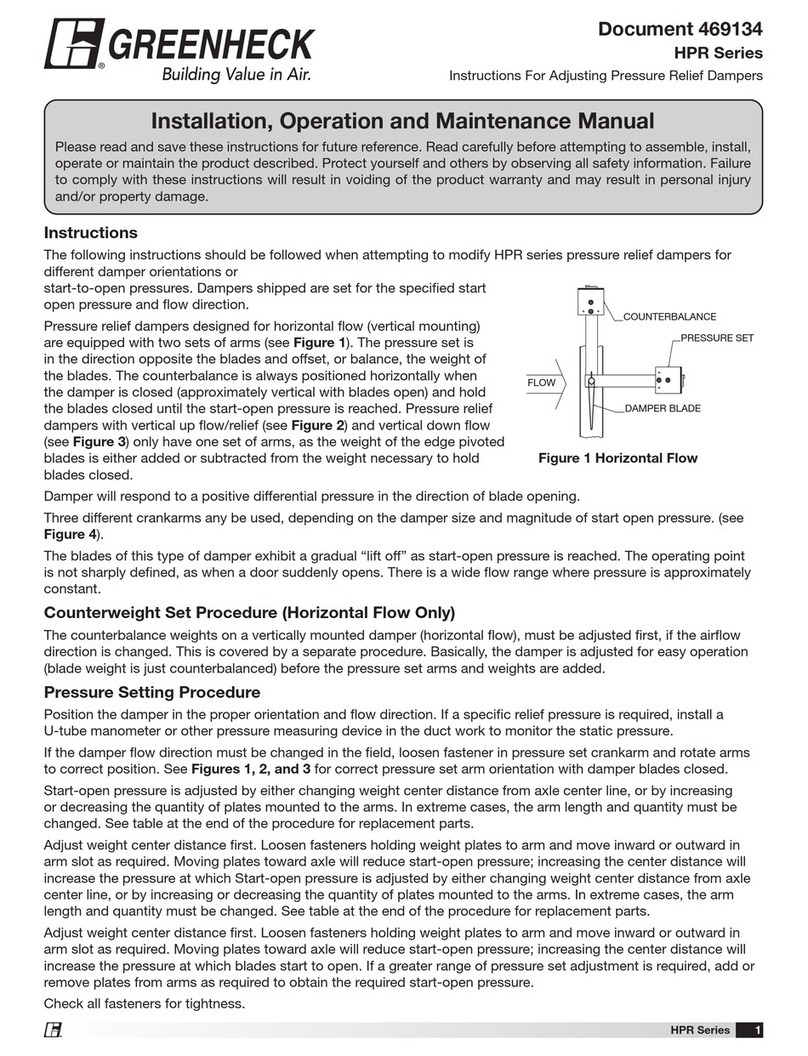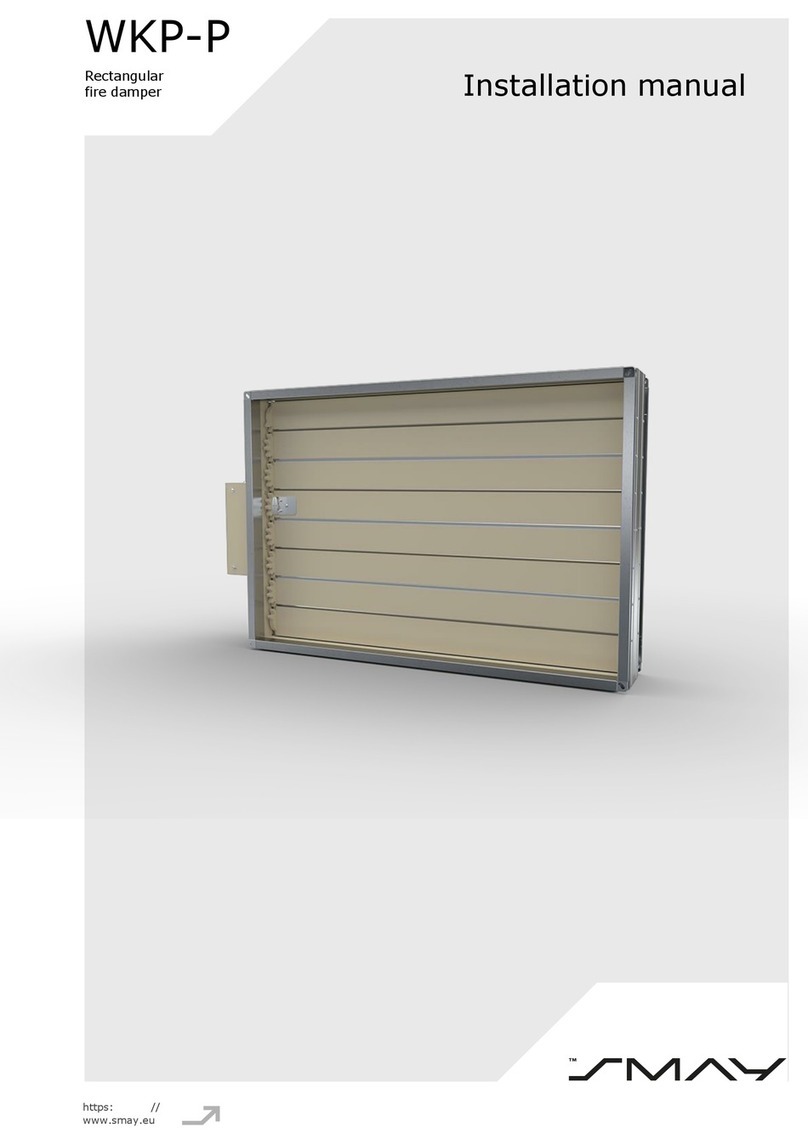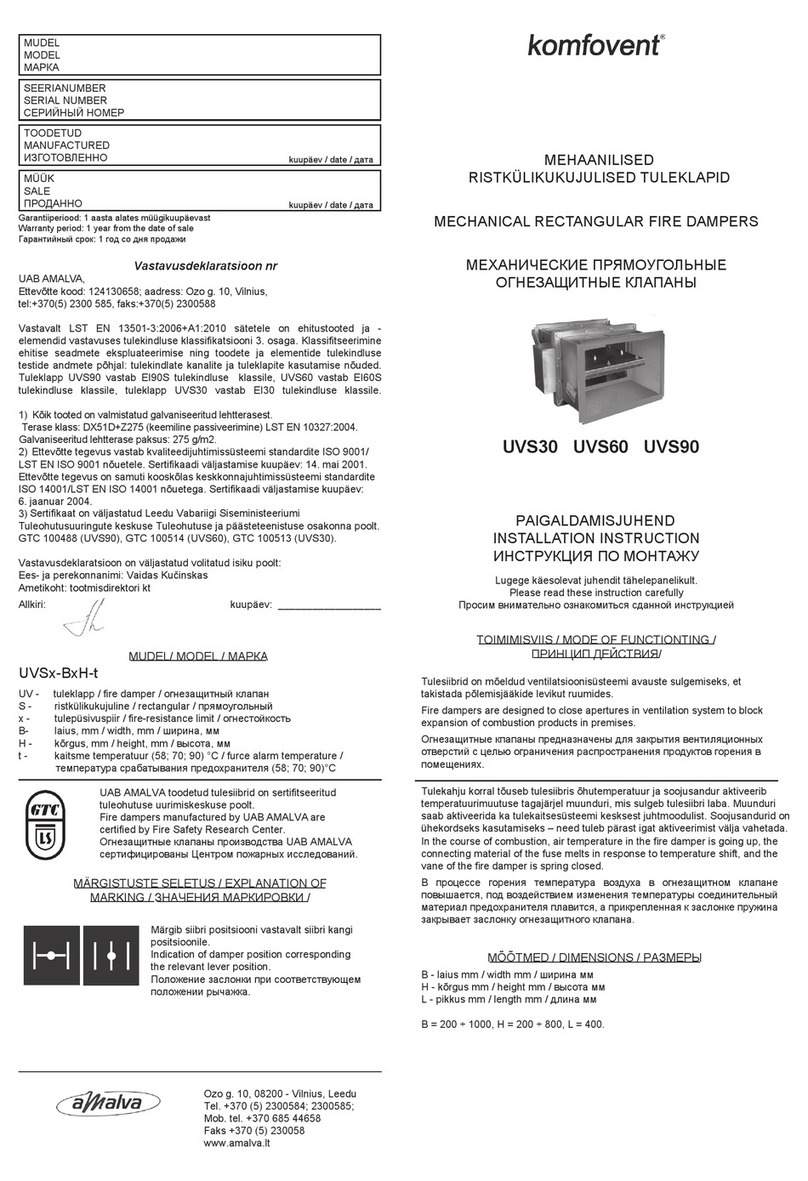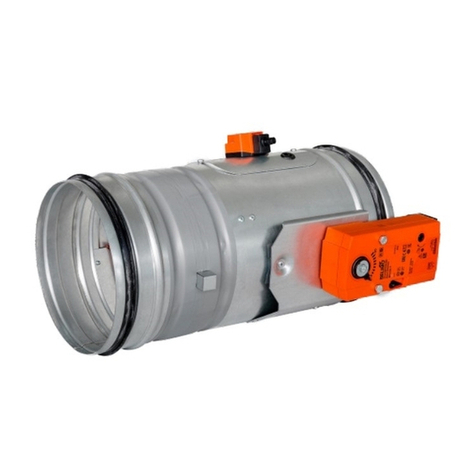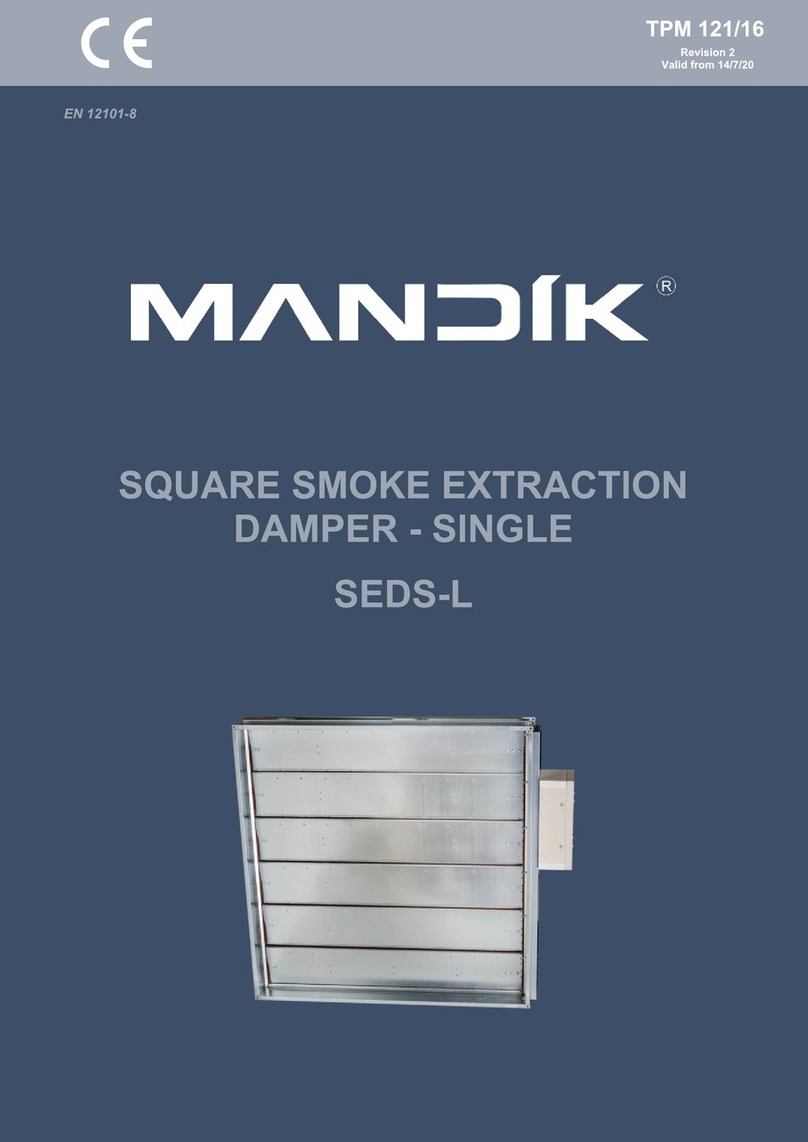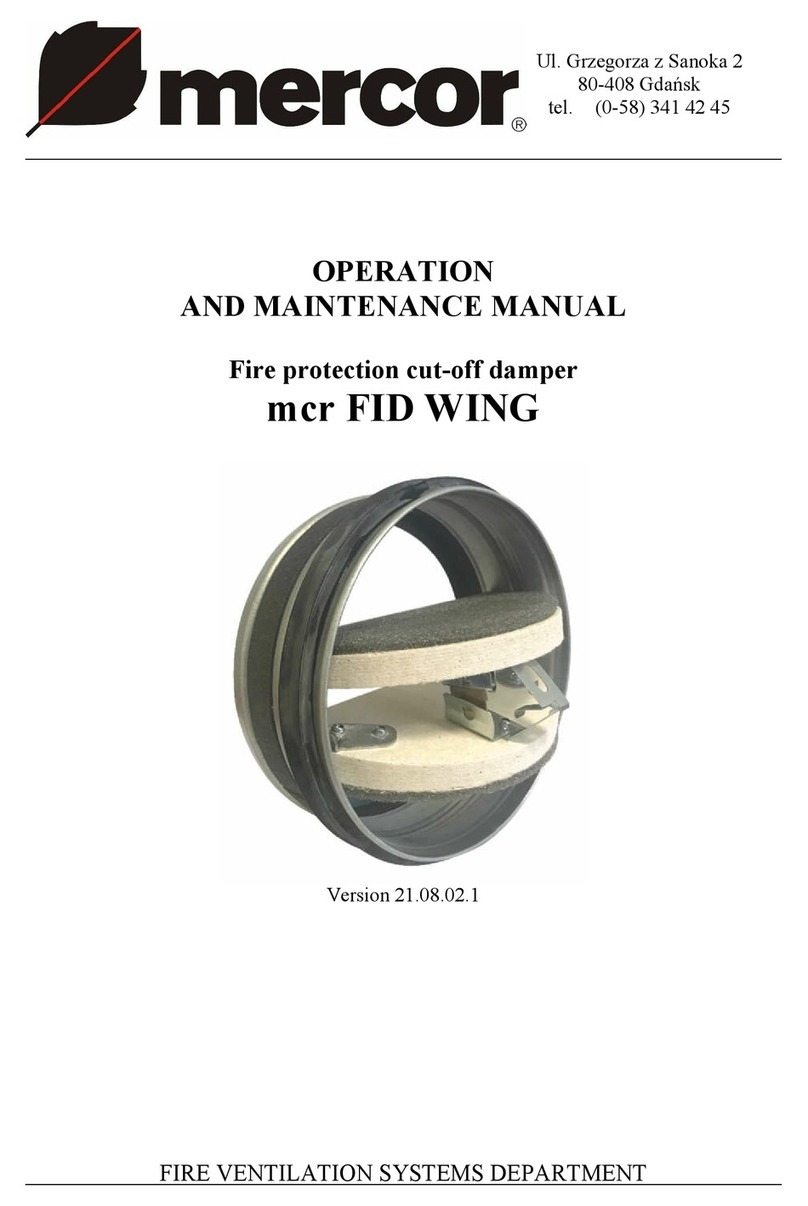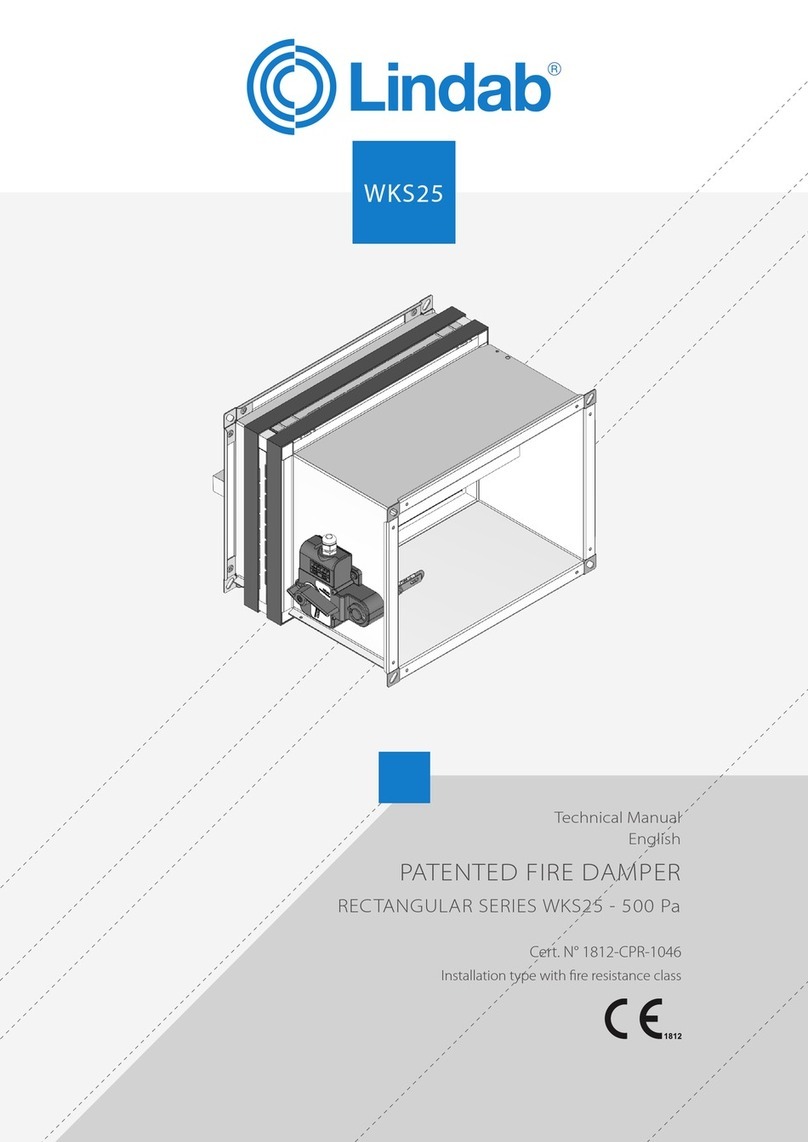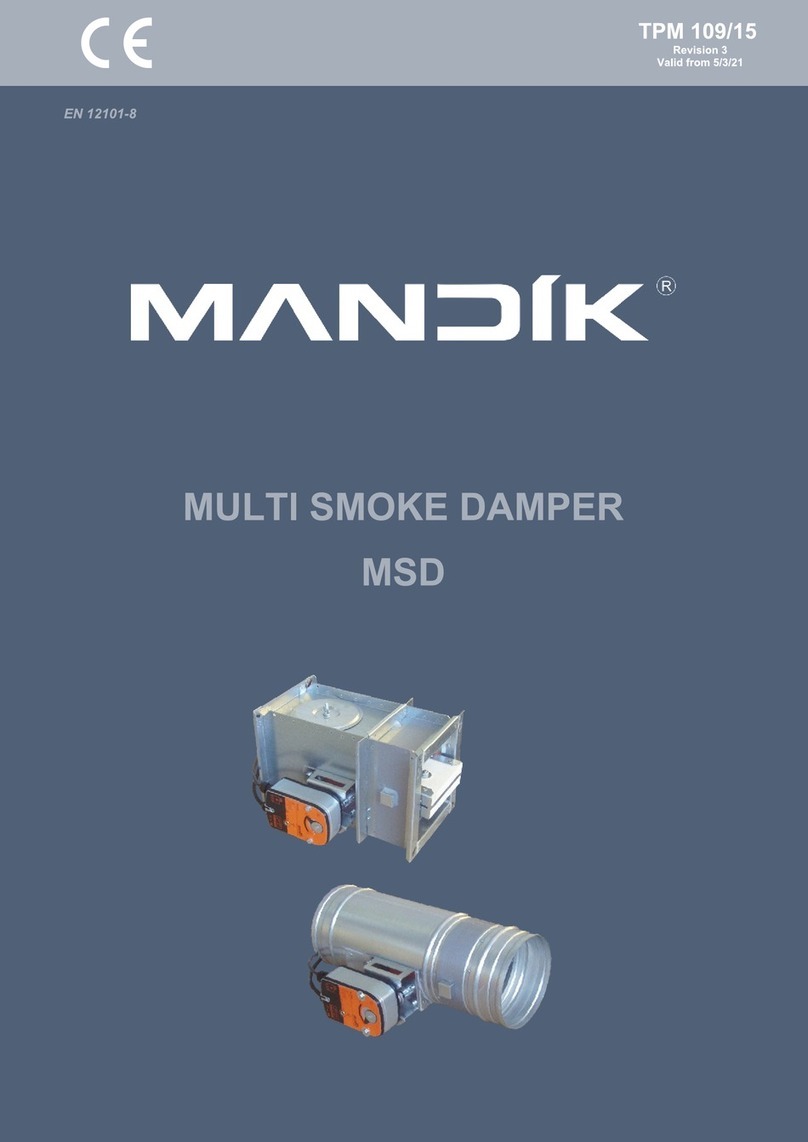
FAN OUTLET AND INLET BOX DAMPERS
INSTALLATION
Dampers are designed and manufactured with flanges and
mounting holes to match the fan’s outlet flange. Gasketing may
be used between the flanges as required.
Standard construction of nyb fan outlet dampers requires
dampers to be mounted with the control arm and linkage posi-
tioned on the inlet side of the fan with the control arm pointing
toward the fan. (Figure 1)
For manual operation of the damper, the locking bolt should be
loosened sufficiently to permit movement of the control arm to
the desired position. The locking bolt should be retightened to
maintain the desired position.
For electric, hydraulic, pneumatic or mechanical operation of
the damper, the locking bolt should be removed from the con-
trol arm. This allows freedom of movement for the damper and
operator linkage.
Figure 1
MAINTENANCE
Routine maintenance of dampers should include periodic
inspection of the vanes and rods in the airstream to determine
if replacement is necessary due to airstream corrosion or abra-
sion.
Vane rod bearings and linkage bushings should be inspected
for looseness or wear and replaced when necessary. Standard
dampers may require occasional lubrication of friction points
with 30W oil.
Optional flanged ball bearings with grease fittings should be
lubricated with lithium base NLGI Grade No. 2 grease every six
(6) months during typical operation.
Optional stuffing box packing should be repacked with 1/8”
diameter graphite packing when leakage is excessive.
OPERATION
Air moving across a damper exerts a considerable amount of
force on the damper vanes. Vanes tend to close as a result of
this force. A locking bolt is provided on the control arm to hold
the vanes in the desired position, (Figure 2). See separate
Catalog Sheet for Outlet Dampers for Centrifugal Fans for cal-
culating required operating torque.
Figure 2
SHIPPING
Fan outlet dampers are shipped mounted on fans whenever pos-
sible. Shipment on separate skids may be required when the size
of the fan/damper combination poses shipping difficulties.
RECEIVING AND INSPECTION
Unpack and inspect the damper. Loosen the control arm lock-
ing bolt and operate the damper from the closed to open posi-
tions several times to insure that the vanes and linkage move
freely and do not bind. Any visible sign of damage should be
noted on the Bill of Lading.
HANDLING AND STORAGE
Damper should be lifted by the external case only, never by the
vanes, linkage, control plate or control arm.
Whenever possible, dampers should be stored in clean, dry
locations to prevent rust and corrosion. If outdoor storage is
necessary, damper should be as well protected as possible
against the elements.
If long term storage is required, routine maintenance proce-
dures should be followed and the damper should be modulated
periodically to insure free movement of vanes and linkage.
Control
Plate
Air
Flow
INSTALLATION
MAINTENANCE,
OPERATING
INSTRUCTIONS
IM-220
